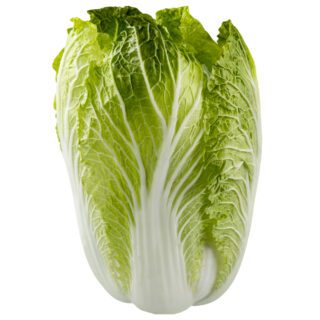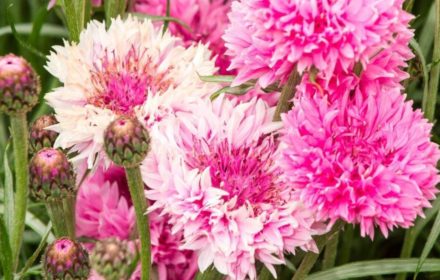How to Grow Mixed Angel Wings from Seeds
Mixed Angel Wings, also known as Schizanthus or Butterfly Flower, is a charming annual that adds a burst of colour to both indoor and outdoor displays. With delicate blooms in pastel shades of red, pink, purple, and violet, these flowers resemble miniature orchids and are perfect for borders, beds, pots, and containers. The plants are bushy, reaching a height of 30-50 cm and spreading up to 40 cm. Their long stems and vibrant flowers make them ideal for cut flower arrangements. Follow this guide to successfully sow and grow Mixed Angel Wings seeds in your UK garden.
When and Where to Sow Mixed Angel Wings Seeds
- Outdoor Sowing: Sow seeds directly outdoors from late spring to early summer (May to June) when all risk of frost has passed, and temperatures are consistently warm. Angel Wings thrive in cooler summer climates and will perform best in well-drained soil with plenty of sunlight.
- Indoor Sowing: For an earlier start, sow seeds indoors 6-8 weeks before the last expected frost (typically from February to April). This will give the seedlings a head start, allowing you to transplant strong, established plants outdoors when the weather improves.
Ideal Growing Conditions for Mixed Angel Wings Plants
- Soil Requirements: Angel Wings prefer well-drained, moderately fertile soil. Use a multipurpose compost or potting mix enriched with organic matter to provide the nutrients needed for healthy growth. Avoid heavy, waterlogged soil, as this can hinder germination and root development.
- Sunlight: Choose a location that receives full sun to partial shade. While Angel Wings can tolerate partial shade, they will produce more flowers and stronger growth in full sunlight.
- Temperature: The ideal temperature range for germination is 15-20°C (59-68°F). These flowers are best suited to cooler summer climates, making them perfect for UK gardens.
How to Sow Mixed Angel Wings Seeds Indoors
- Sowing Depth and Containers: Fill small pots or seed trays with a fine, well-draining seed compost. Sow the seeds on the surface of the compost and press gently to ensure good contact. Lightly cover with a thin layer of compost or vermiculite, no more than 3 mm deep, as the seeds need some light to germinate.
- Germination Conditions: Place the pots in a bright, warm area, such as a windowsill or heated greenhouse. Maintain temperatures between 15-20°C. To retain humidity and warmth, cover the pots with a clear plastic lid, polythene bag, or cling film, ensuring good air circulation to prevent mould.
- Watering: Keep the compost moist but not waterlogged. Overwatering can lead to poor germination and seedling rot. Water gently when the surface becomes dry, using a fine mist spray to avoid disturbing the seeds.
- Germination Time: Germination typically occurs within 14-21 days. Once seedlings emerge and have developed a few true leaves, remove any cover and continue to grow in cooler conditions to promote sturdy growth.
Transplanting and Planting Out
- Transplanting Seedlings: When the seedlings are about 5 cm (2 inches) tall and have a few sets of true leaves, transplant them into individual pots. Allow them to grow on in these pots until they are strong enough to be planted outdoors.
- Hardening Off: Gradually acclimatise the seedlings to outdoor conditions by placing them outside during the day and bringing them in at night for 7-10 days. This process reduces transplant shock and prepares the plants for outdoor growing.
- Planting Out: Once the risk of frost has passed and the weather is mild, plant the seedlings in their final positions, spaced about 20-30 cm (8-12 inches) apart. Choose a well-drained location in full sun or partial shade.
Caring for Mixed Angel Wings Plants
- Watering: Water regularly to keep the soil evenly moist, especially during dry spells. However, avoid waterlogging, as Angel Wings are susceptible to root rot. Water at the base of the plants to keep the foliage dry and reduce the risk of fungal diseases.
- Feeding: Apply a balanced liquid fertiliser every 2-4 weeks during the growing season to support healthy growth and prolific flowering. Avoid overfeeding, which can lead to excessive foliage growth at the expense of blooms.
- Pruning and Maintenance: Regularly pinch back the growing tips to encourage a bushier, more compact habit. Remove spent flowers to prolong the blooming period and keep the plants looking tidy.
Using Mixed Angel Wings in the Garden
- Borders and Bedding: Angel Wings are perfect for adding vibrant colour to garden borders and flower beds. Plant in groups for a striking display, combining with other summer annuals for a varied texture and colour palette.
- Containers and Hanging Baskets: Their compact size and trailing habit make Angel Wings ideal for pots, containers, and hanging baskets. Combine with trailing plants like ivy or lobelia for a stunning cascading effect.
- Cut Flowers: The long stems and delicate blooms of Angel Wings make them an excellent choice for cut flower arrangements. Harvest the flowers when they are fully open and place them in water immediately to extend their vase life.
Common Questions About Growing Mixed Angel Wings
- Can Angel Wings be grown as perennials? In the UK, Angel Wings (Schizanthus) are typically grown as annuals. They do not tolerate frost and will usually complete their life cycle within one growing season.
- Why are my seedlings not growing well? Poor growth in seedlings can be caused by overwatering, lack of light, or incorrect temperatures. Ensure the seedlings are in a bright location, avoid waterlogging, and maintain a steady temperature of 15-20°C.
- Can Angel Wings be grown indoors? Yes, Angel Wings can be grown indoors, especially in cooler climates. Place them in a bright spot with good air circulation and water carefully to avoid damp conditions.
By following these steps, you can enjoy a vibrant display of Mixed Angel Wings in your garden or containers. Their colourful blooms and delicate, orchid-like flowers make them a beautiful addition to any garden space, adding charm and elegance throughout the summer months.



















